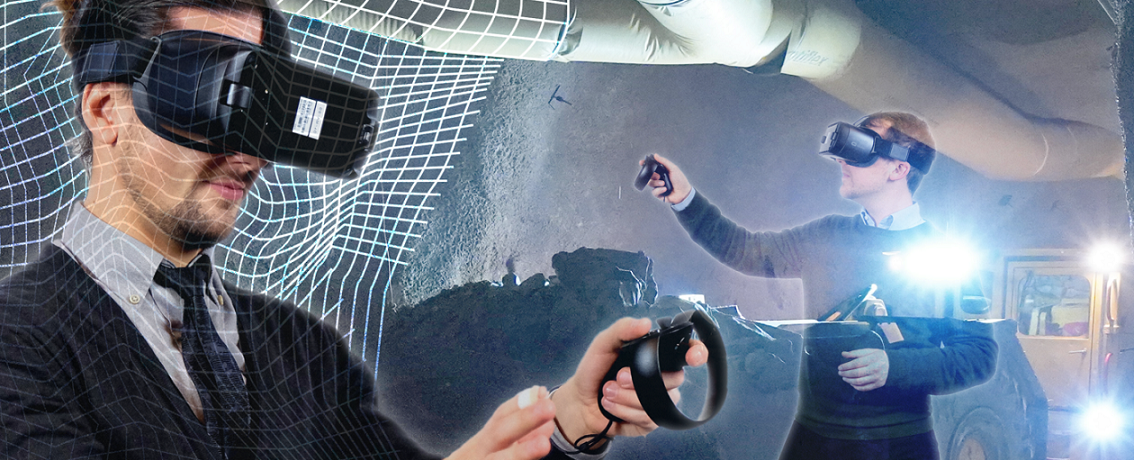
Integrating virtual reality into European mining engineering education
European mining engineering education establishing VR training in teaching practice
Mining engineering applies science and technology to the extraction of minerals. It deals with complex phenomena, ranging from geological conditions such as 3-dimensional deposits and structures, to the planning of mines using numerous underground drifts and shafts, to heavy machinery operating in artificially ventilated atmospheres. These characteristics and challenges vary significantly from mine to mine.
VR-Mine project has built a new type of highly informative and interactive virtual mine to fill a gap within our education systems – validating theory with practical scenarios. The VR‐Mine functions as a link that merges the theoretical mining knowledge in academia and practices of the mining industry while fostering knowledge and innovation. The main objective of VR‐Mine was to develop a VR application that is able to transfer aspects of a physical mine to a virtual environment allowing immersion and scalability as it can easily be integrated into any existing university curriculum.
Underground mines are amongst the most challenging environments with respect to work health and safety. Being unfamiliar with the potential hazards that might occur in underground mining puts young professionals at an elevated degree of risk. When students go on internships, they face a problem: on the one hand, they want to gain experience with underground mining but on the other hand, mining companies prefer to keep them in safe areas to avoid risks. By using the VR-Mine in mining engineering education, we can familiarise students with the challenges of underground mining in a safe environment in a cost-efficient manner. The project also allows universities and mining companies to demonstrate aspects of underground mining to the public, which is impossible in normal operation due to the potential risks of physical visits.
When designing the VR-Mine, the project consortium aimed at simulating a first real underground experience. Implementing interactive scenes was especially challenging. In the VR-Mine, we sometimes tend to forget that the environment is only virtual. We believe the VR-based illustration of mining processes offers a unique opportunity to gain an even better level of understanding than is possible with conventional teaching formats. The project strives to cover more course contents with VR.
